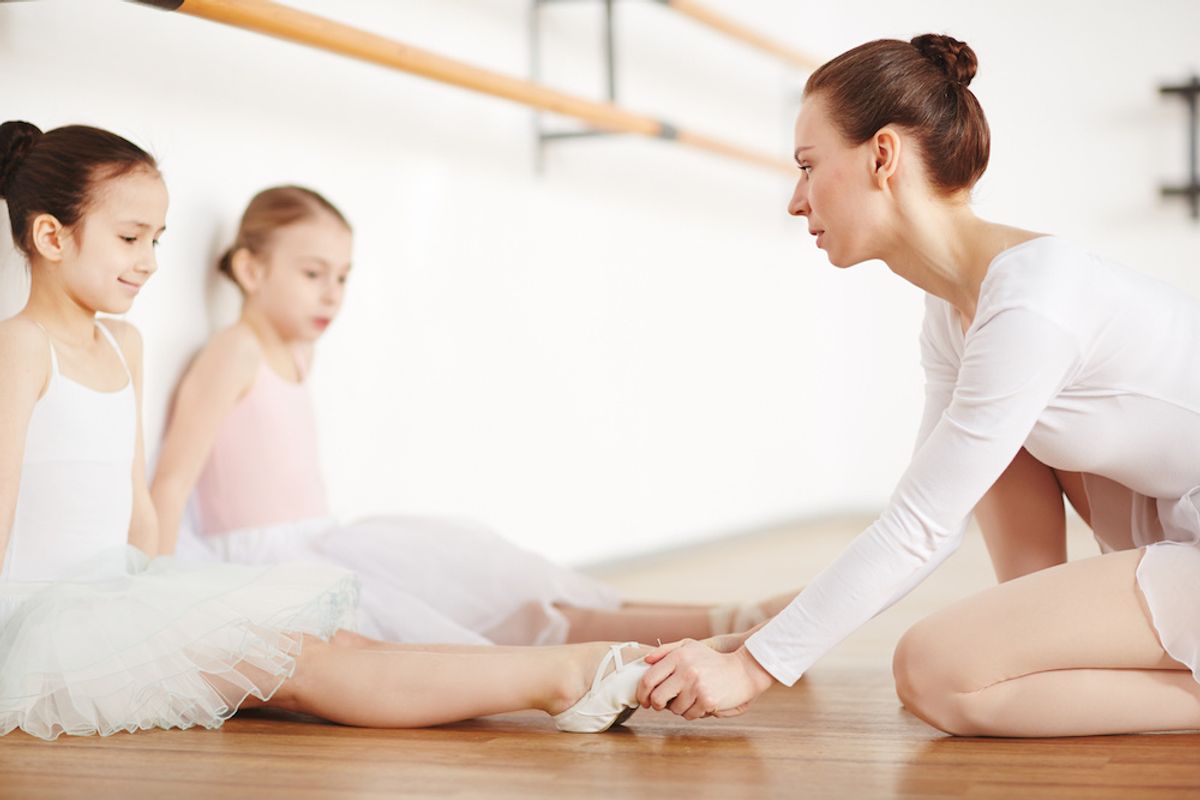
I love this level. I see it as the true origin of a student’s dance journey. Intermediate students have bought in, caught the fever, chosen to move beyond inquiry about dance to investment in dance. They are yearning to advance past their beginner training and label.
As teachers, we begin to set more stringent expectations for them to commit to class, take ownership of their learning, and comprehend more terminology and skills. Yet, they are still a bit disheveled in their movement and engagement. They still sometimes forget their dance pants and confuse upstage with downstage. Some of them are still, well, terrified.
This blend of enthusiasm and fragility can come to a head when you are making and rehearsing their first piece. To keep everyone feeling confident throughout the process and in the performance, remember: pace, space and sight.
Pace
- Intermediate dancers need ample time to memorize and clarify a sequence. Usually the movement itself is advanced enough for them to focus entirely on that. It will take longer than you expect to conquer a complicated phrase that also changes facings and travels, for example.
- Some dancers need to know the nitty-gritty details of every move before learning the next. Do what you can to assuage their curiosities, and be very clear about counts, but keep progressing. Intermediate dancers will find security in envisioning the beginning, middle and end of the piece.
Space
At the intermediate level, we begin to challenge students with intricate spatial patterns. Because these dancers are still grasping for spatial awareness, there will be traffic jams during rehearsal. Spend a full day simply walking the pathways. Have them draw bird’s-eye-view maps of their own trajectory through the piece.
Try using some painter’s tape on the studio floor to demarcate not just “center,” “quarter” or “half,” but also any diagonal lines or geometric shapes they must achieve.
- Consider doing the entire piece in groups—so that every dancer is in unison with at least one other dancer at all times. Each group can diverge from the next in timing and material to satisfy your choreographic interests, but group members who are in unison can help a dancer discern their place within that complexity.
Sight
- Intermediates continue to look down or nowhere. Decisive focus—versus an ambiguous stare—will ground uneasy dancers’ nerves and refine their dancing. Get them actually using their sight before showtime.
- Spend a class concentrating solely on sight. Have them see and take mental pictures of one another in all formations. Have them lock eyes with someone across the room, go to them and discuss phrase material. Have them individually rehearse a section and choose distinct items in the room to see during certain counts.
- Repeat one of these exercises, even for a couple minutes, in your first spacing rehearsal at the performance venue. Doing so will more fully orient them “in their bodies” onstage.



